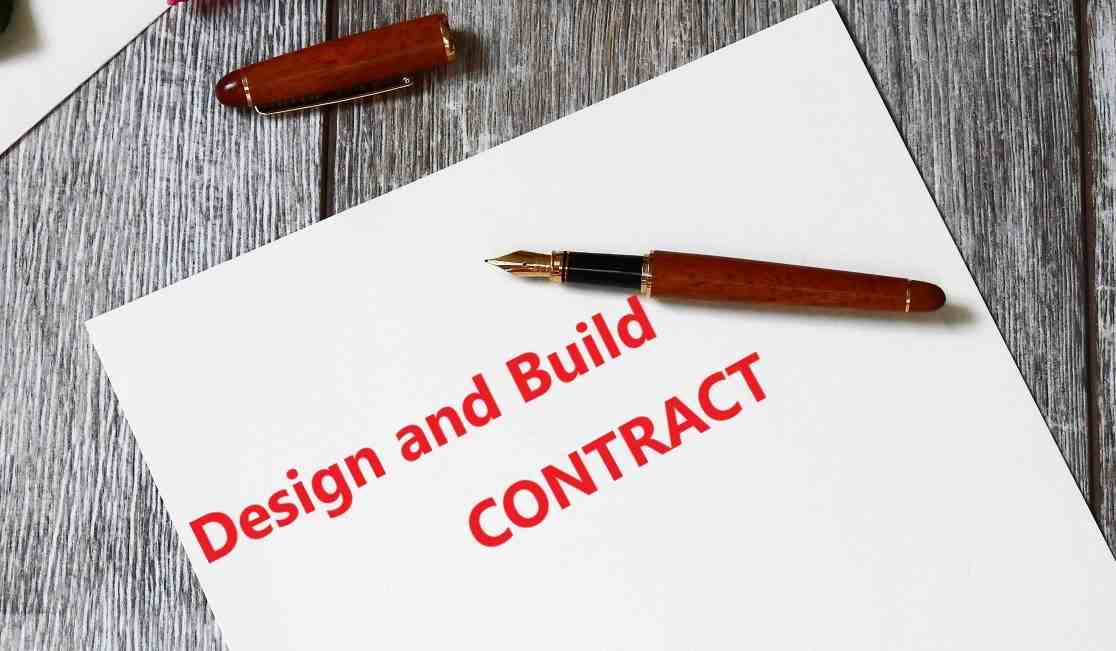What is Design and Build Contract in Construction? 5 Important Points
- By
- Pooja |
- January 09, 2021 |
- Civil Engineering, Project Management, Construction,

When would you use a design and build contract?
The principal reason for selecting the Design and Build Contract is to appoint a single contractor who would be responsible to engage a design consultant and other sub-contractors, carrying out all the design and key surveys plus investigations and finally constructing the project.
Compact Project Programme
Design and Build Contract helps the client to appoint the contractor to deliver the project ensuring a compact project programme. As a single contractor of the project with full control of the design and other procurement processes, it would be far easier for the contractor to make a compact project programme and deliver it in a FastTrack Mode.
Constructability
The principal contractor comes with the expertise of construction phasing, temporary traffic management, constructability preferences and many other value engineering solutions. That expertise not only helps to minimise the overall construction cost, but also minimises the project duration, and carbon footprint and makes the project eco-friendly.
Project Risk
Infrastructure project sometimes faces project risks of various kind such as design risk, commercial risk, project duration risk, etc. Individual stakeholder such as designers, underground utility owners, etc plays a very important role in the progress of the project. Having a single contractor on board right from the design stage, it would be easier to minimise those project risks and complete the project Intime and within the project budget.
What is the role of the contractor in the design and build contract?
As stated above the contractor has the whole responsibilities for almost every key aspect of the project in the design and build contract. Here are the key responsibilities of the design and build contractor?
- Undertake the design of the project and appoint the design consultant
- Assign Surveyors and Sub-Contractor to carry out all investigations, lab tests and analysis
- Prepare Construction Phase Plan and execute construction process
- Coordinate with all stakeholders and manage the entire project from design to construction.
Design and Build Contract provides a unique opportunity for the contractor to chip in quite an early stage in the project and adds values in terms of constructability, innovation opportunities, mitigation of construction phasing risks, etc.
The contractor’s vision from a constructability point of view and the designer’s capability to develop a compliant and robust design model complement each other plus it offloads all critical project risks from the client’s shoulder and the Contractor controls those risks, so overall it works as a win-win situation for contractor, client and design consultant.
What are the possible risks of the design and build contract?
As mentioned above, the contractor owns all the major risks of the project, so it’s very to the contractor to identify and mitigate all possible projects at an adequate time and without impacting the project programme, duration and budget. Following are the few key risks that the contractor must ponder while considering opting for a Design and Build Contractor:
Lumpsum Fixed Price of the Design and Build Contract
Some of the Design and Build Contracts come with a lump-sum fixed contract option. In these situations, the contractor would need to tender for the project with a fixed cost of the design and construction of the project. At the early stage of the project, there would be too many unknowns in Infront of the contractor and if the contractor misses to identify and measure those unknowns adequately, it may become a construction liability at later date and may make the project a loss-making project.
To address this problem, it is recommended to prepare an Assumption, Risk and Opportunity register and list down all the major project assumptions and associated risks against those assumptions. After completing those items, assign a monetary value against all those risks in order to mitigate or eliminate those risks.
Finally, it will generate a risk and opportunity pot for the contractor, where every project risk will create an opportunity for the contractor to balance the risk against the opportunity and prepare the most suitable tender price for bid.
Unclear Scope of Work
If the scope of work of the Design and Build Contract is not very clear, it would generate a huge risk to the contractor during the execution stage. It would be highly recommended to review the contract and carry out a gap analysis to find the gaps in the information.
Thereafter, It is recommended to request further information during the tender stage and make sure to fill those gaps with the given information and submit the tender.
Change of scope of work at the midway of the project
Sometimes during the project execution stage, the client requests the contractor to either cut short the scope of work or further extend the scope of work. In either case, it’s very important for the contractor to evaluate the conditions and scope of the new change order and carry out all project risk assessments methodically before accepting the change in the scope of work.
Read More:
Key Stakeholder leaves the project mid-way
In the design and build contract, the key stakeholders like Design consultants or sub-contractors play a very important role. For some unavoidable reason, if any of the key stakeholders leave the project, it may significantly hamper the project. In those situations, it would be recommended that the contractor set out a clear transition or handover clause when appointing the design consultants or sub-contractors.
The handover clause must cover an adequate transition period to transfer the responsibility from the existing consultant or sub-contractor to the new one.
What is the difference between a traditional contract and a design and build contract?
In a traditional contract, the client holds the project ownership and appoints the design consultant to develop the design package as per the scope of work set out by the client. The client then appoints the contractor with a Traditional contract route where the contractor bid for the project using the design package supplied by the client’s designer.
In a traditional contract, the project risk lies with the client and any design error or gaps are the opportunities for the contractor to raise the change control during the execution stage. Whereas in the Design and Build Contract, the design responsibilities lie with the contractor so the design error or gaps need to be taken by the contractor.
Normally it is recommended to use a traditional contract for the smaller project where the possibilities of design errors or gaps in the design are quite low. Also, to mitigate that risk, the client can appoint an ECI contractor on board and address those issues.
The Design and Build Contract are normally preferred when the project size is big and significant capital cost is required to build the project. In this case, it is very important for the client to hand over all significant project risk to the contractor and aims to fix the project cost upfront via an open design and build tender process.
What are the Advantages of the Design and Build Contract?
- Design and Build Contract is a clear winner for the client or project sponsor in the case of a large scale infrastructure project where the client foresees significant project risk due to various reasons like project unknowns, significant stakeholder management, various design and sub-contractor requirements, etc.
- The contractor as a single point of contact and owner would help to run the project in a smooth and methodical manner if the terms of the services are adequately agreed upon between the contractor and the client.
- The fixed project cost would make the Design and Build contract a preferable option to the client.
- Significant cost saving due to the fact that design, procurement of suppliers and surveyors all will be dealt with by a single contractor so the procurement process will be far less and may receive a very competitive bid for the job.
- Significant opportunities to use innovation, value engineering solutions and lean approach to improve productivity and efficiency.
- Change Control would be far less compared to a traditional contract.
I hope the above blog provides you with an in-depth knowledge of Design and Build Contract.
Please feel free to like, share and comment.
Admin, gcelab.com Please see our Pillar Post to know why we founded gcelab.com.
Read More:
- Schedule of Work in Construction Contract: 5 Important Points
-
Preamble and Preliminaries in Construction Contract- 5 Important Points

Pooja
Founder at gcelab.com, Pooja is an Entrepreneur unlocking human potential. Working in the Principles of Lean Start-up, Pooja believes in Transparency and User Happiness the most. Pooja’s background in teaching gives her a sophisticated grasp on even the most tedious aspect of course building. She is passionate about people who believe that good is not enough.

